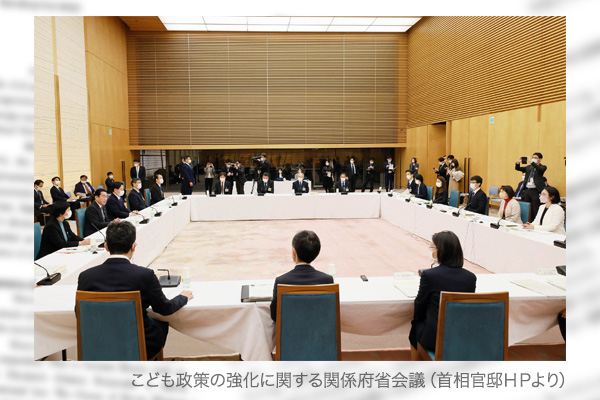The number of births in Japan in 2022 slipped below 800,000 for the first time since records began in 1899 to 799,728, according to a preliminary report by the Ministry of Health, Labor and Welfare. The annual number of births has accelerated a decline after remaining above 1 million in 2015, prompting the government to consider enhancing support for children and parenting.
Lack of consideration to both men and women
Have national and local governments failed to implement active birthrate-boosting measures? Spending on such measures has not been sufficient, but support for children and parenting has made great progress. Childcare facilities have been quantitatively expanded. Sick child care, temporary childcare and various other services have been enhanced. Local childrearing support centers have been developed. Childcare leave benefits have been expanded. Child education and care have been made free. Child healthcare subsidies have substantially reduced hospitalization and hospital visit costs. Nevertheless, the number of births has accelerated a decline, indicating that new approaches should be introduced in addition to existing priority measures.
Birthrate-boosting measures so far have been remarkably unbalanced. First, they have put emphasis on women and lacked consideration to men. Given that pregnancy and childbirth are peculiar to women, various conveniences for them are required. But men are responsible for some 40% of infertility. While the birthrate decline is attributed mainly to the tendency to remain unmarried, reasons why men remain unmarried or cannot get married have not been considered sufficiently. Attention should be paid to the findings that the marital rate for nonregular male employees is lower than for regular male employees and that lower-income men are less ambitious to have association with women.
Second, the past policies have put emphasis on women willing to remain employed while giving less consideration to women willing to lead a life focusing on children and family. While families with full-time housewives have decreased and double-income families have increased, families with part-timer housewives have accounted for most of the increase. A survey on unmarried women’s ideal life courses found that increasing share of about 34% of respondents chose to get married, have children and continue to work, balancing working and childrearing. But about 40%, though decreasing in number, chose to retire on marriage or childbirth and reenter the labor market after childrearing or chose to retire on marriage or childbirth and remain full-time housewives even after childrearing. Unmarried women are thus divided about ideal life courses. Sufficient consideration is required to women in favor of each choice.
Measures required to address the tendency to remain unmarried
What must be done to moderate a decline in the number of births is the promotion of marriage. The share of children born out of wedlock in Japan is exceptionally low in the world at some 3%, meaning that 97% of children are born from married couples. An argument that active public intervention should be avoided in marriage that is a free personal choice may be right. But this should be considered along with another argument that it is difficult to prevent birthrates from falling without correcting the tendency to remain unmarried.
Japan now must seriously consider whether to actively support marriage to correct the downtrend in the birthrate or focus on support for parenting and working after marriage.
Takeshi Kudo is an adjunct lecturer at the Faculty of Literature and Science, Nihon University, and a member of the Planning Committee, Japan Institute for National Fundamentals.


